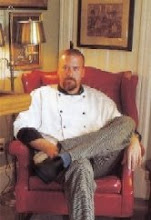The lifestyle of the bird is probably the best pointer to how it should be cooked. Pheasant walk around quite a bit, so they develop muscular legs. They are also very lean birds, so the breast can't endure too much high-heat cooking. I have found that pheasant also benefit from using two cooking methods. Braising the leg in sauerkraut and slow-roasting the breast makes a succulent dish. The sauerkraut seems to help keep the leg moist during the cooking, while adding incredible flavor. Slow-roasting the breast insures that it will be tender without drying out. Never bone out a pheasant breast before cooking. It is a sure way to make a dry tasteless meal.
Scottish wood pigeon on the other hand is the only bird I know of that actually benefits from being cooked off the bone. It has such a strong taste that cooking it off the bone, wrapped in cabbage leaves, makes it moist and delicious.
The two techniques to cook a duck are confit for the leg, and pan roasting for the breast meat. This results in a tender and tasty dish that offers the best of what each cut has to offer. Slice the breast meat after pan roasting it medium-rare, and serve it with the confit leg. Creamy polenta makes a great side dish with this, as does roasted root vegetable risotto.
Birds offer a chance to employ many different cooking techniques, including making stock from the bones. A simple reduction of the stock with some wine and aromatics makes a great sauce to complement the meat.
Try cooking a bird that you haven't cooked before, or cook a familiar bird with a new technique. Post a comment beforehand if you want a pointer, or afterwards to share your experience with other readers. Enjoy!

No comments:
Post a Comment